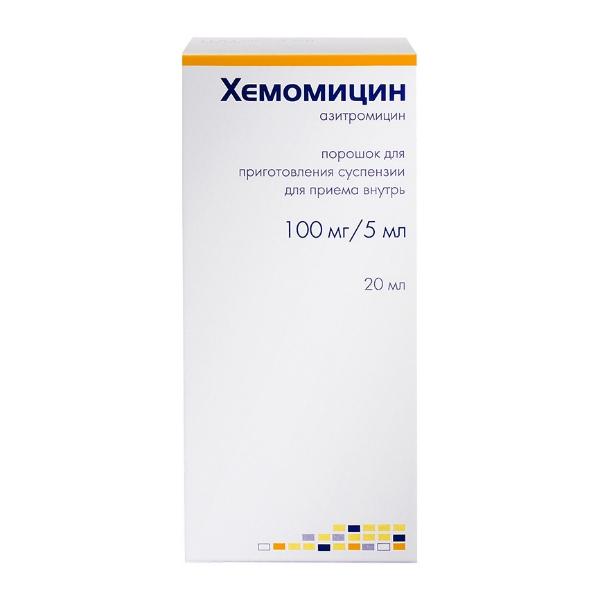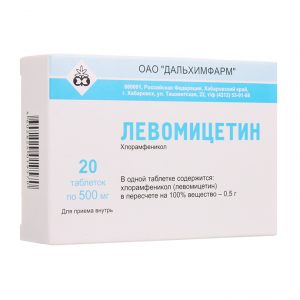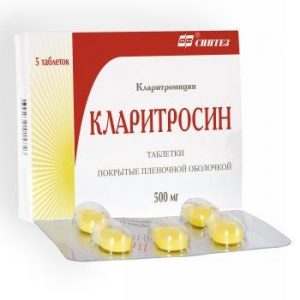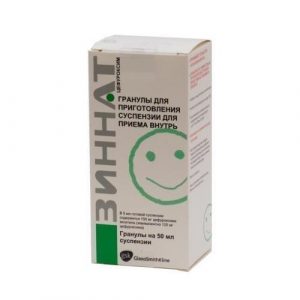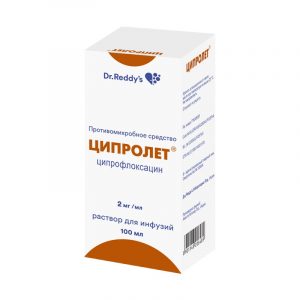Description
Description
Powder of white or almost white color with a fruity odor. Description of the finished suspension: the suspension is almost white in color with a fruity odor.
Indications
Infectious and inflammatory diseases caused by microorganisms sensitive to azithromycin: infections of the upper respiratory tract and ENT organs (sinusitis, tonsillitis, pharyngitis, otitis media) infections of the lower respiratory tract (bacterial and atypical pneumonia, acute bronchitis, acute bronchitis) infections of the skin and soft tissues (acne vulgaris of moderate severity, erysipelas, impetigo, secondarily infected dermatoses) infections of the urogenital tract (urethritis and / or cervicitis) caused by Chlamydia tracho matis Lyme disease (borreliosis), for the treatment of the initial stage (erythema migrans).
Contraindications
Hypersensitivity to azithromycin or other components of the drug hypersensitivity to erythromycin, other macrolides, ketolides, concomitant use with ergotamine, dihydroergotamine severe hepatic impairment of renal function impairment of severe renal function (less than 40 ml of creatine clearance) at the time of treatment is suspended) children under 6 months of age. With caution Myasthenia gravis, impaired liver function of mild to moderate severity, impaired renal function of mild to moderate severity (creatinine clearance greater than 40 ml / min), in patients with proarrhythmogenic factors (especially in elderly patients): with congenital or acquired prolongation of the QT interval, in patients receiving antiarrhythmic drugs of classes IA (quinidine, procainamide) and III (dofetilide, amiodarone and sotalol), cisapride, terfenadine, antipsychotic drugs (citalopram), fluoroquinolones (moxifloxacin and levofloxacin), with impaired water-electrolyte balance, especially in the case of hypokalemia or hypomagnesemia, with clinically significant bradycardia, cardiac arrhythmia, or t congestive heart failure simultaneous use of digoxin, warfarin, cyclosporine pregnancy.
Use during pregnancy and lactation
During pregnancy, hemomycin is prescribed only when the expected benefit of the therapy to the mother outweighs the potential risk to the fetus.
If you need to use the drug during lactation, you should decide whether to stop breastfeeding while you are using the drug.
Special instructions
If you miss one dose of the drug, you should take the missed dose as soon as possible, and the subsequent ones with breaks of 24 hours. Azithromycin should be taken at least one hour before or two hours after taking antacid drugs . Azithromycin should be used with caution in patients with impaired liver function of mild to moderate severity due to the possibility of developing fulminant hepatitis and severe renal failure. In the presence of symptoms of impaired liver function, such as rapidly increasing asthenia, jaundice, dark urine, a tendency to bleeding, hepatic encephalopathy, drug therapy should be discontinued and a study of the functional state of the liver should be carried out. In case of impaired renal function of mild to moderate severity (creatinine clearance greater than 40 ml / min), azithromycin therapy should be carried out with caution under the control of the state of renal function. As with the use of other antibacterial drugs, patients with azithromycin should be regularly examined for the presence of unresponsive microorganisms and signs of superinfection, including fungal infections. The drug should not be used for longer courses than indicated in the instructions, since the pharmacokinetic properties of azithromycin make it possible to recommend a short and simple dosage regimen. There is no data on the possible interaction between azithromycin and derivatives of ergotamine and dihydroergotamine, but due to the development of ergotism with the simultaneous use of macrolides with derivatives of ergotamine and dihydroergotamine, this combination is not recommended. With prolonged use of azithromycin, the development of pseudomembranous colitis caused by Clostridium difficile is possible, as in the form of mild diarrhea against the background of the prima drug, and also 2 months after the end of therapy, clostridial pseudomembranous colitis should be excluded. When treated with macrolides, including azithromycin, an increase in cardiac repolarization and QT intralum was observed, increasing the risk of developing cardiac arrhythmias, including pirouette type arrhythmias, which can lead to cardiac arrest. Caution should be exercised when using the drug in patients with proarrhythmogenic factors (especially in elderly patients), including with a congenital or acquired extended QT interval in patients receiving therapy with drugs of classes IA (quinidine, procainamide), III (dofetilide, amiodarone and sotalol), cisapride, terfenadine, antipsychotic drugs (citalopram), fluoroquinolones (moxifloxacin) and levofloxacin with impaired water-electrolyte balance, especially in the case of hypokalemia or hypomagnesemia, with clinically significant bradycardia, cardiac arrhythmias, or severe heart failure. The use of azithromycin can provoke the development of myasthenic syndrome or cause an exacerbation of myasthenia gravis. Influence on the ability to drive vehicles and mechanisms In connection with the possible development of undesirable reactions from the central nervous system during treatment, care must be taken when driving vehicles and performing other activities that require an increased concentration of attention and speed of psychomotor reactions.
Composition of
5 ml of the finished suspension contains: the active substance azithromycin (in the form of azithromycin dihydrate 104.809 mg) 100 mg, excipients – xanthan gum – 20.846 mg, sodium saccharin – 4.134 mg, calcium carbonate – 162.503 mg, colloidal silicon dioxide – 26.00 – 26.00 mg, anhydrous sodium phosphate – 17.259 mg, sorbitol – 2145.682 mg, apple flavor – 3.303 mg, strawberry flavor – 8.159 mg, cherry flavor – 12.096 mg.
Dosage and administration of
The drug is taken orally 1 time / day. 1 hour before meals or 2 hours after eating. Water (distilled or boiled and chilled) is gradually added to the vial to the mark. The contents of the vial are thoroughly shaken until a homogeneous suspension is obtained. If the level of the prepared suspension is below the mark on the label of the vial, re-add water to the mark and shake. The prepared suspension is stable at room temperature for 5 days. For infections of the upper and lower respiratory tract, skin and soft tissues (except for chronic migratory erythema) at the rate of 10 mg / kg body weight 1 time per day for 3 days (course dose of 30 mg / kg). The following dosage regimen is recommended depending on the child s body weight: —————————————————————————————- Patient’s body weight – Daily dose (suspension 100 mg / 5 ml) ————————————————————————————– <8 kg - 2.5 ml (50 mg) -? tablespoons 8-14 kg - 5 ml (100 mg) - 1 spoon 15-24 kg - 10 ml (200 mg) - 2 tablespoons 25-34 kg - 12.5 ml (250 mg) - 2.5 tablespoons 35-45 kg - 17.5 ml (350 mg) - 3? spoons over 45 kg - prescribe doses for adults --------------------------------------------------------------------------------------- Adults: 500 mg (25 ml of suspension 100 mg / 5 ml) 1 time per day for 3 days (course dose of 1.5 g). With moderate acne vulgaris (adults): On days 1, 2 and 3, take 500 mg (25 ml of a suspension of 100 mg / 5 ml) once a day, then take a break from the fourth to the seventh day of treatment, from the eighth day treatments are taken at 500 mg (25 ml) once a week (with an interval of 7 days) for 9 weeks. The course dose is 6 g. With uncomplicated urethritis and / or cervicitis caused by Chlamydia trachomatis - the drug is prescribed for adults: 1 g (50 ml) once. In Lyme disease (borreliosis) for the treatment of the initial stage (erythema migrans) - 1 time per day for 5 days: on the 1st day at a dose of 20 mg / kg body weight, and then from the 2nd to the 5th day - 10 mg / kg body weight. The following dosage regimen is recommended for a suspension of HEMOMITSIN in children with erythema migrans: 5 ml (50 mg) -? tablespoons 8-14 kg - 5 ml (100 mg) - 1 spoon 15-24 kg - 10 ml (200 mg) - 2 tablespoons 25-34 kg - 12.5 ml (250 mg) - 2.5 tablespoons 35-45 kg - 17.5 ml (350 mg) - 3? spoons Before use, the suspension should be shaken. Immediately after taking the suspension, the child should be given a few sips of liquid (water, tea) to rinse and swallow the suspension remaining in the oral cavity. In the event that the dose of the drug was missed, it is necessary, if possible, to immediately take it, and then take subsequent doses with an interval of 24 hours. Patients with impaired renal function In patients with impaired renal function, mild to moderate severity (creatinine clearance> 40 ml / min) dose adjustment is not required. Patients with impaired liver function When used in patients with impaired liver function of mild to moderate severity, dose adjustment is not required. Elderly patients In elderly patients, dose adjustment is not required.
Storage conditions
Store in a dry, dark place at a temperature of 15 to 25 ° C. Keep out of the reach of children.
Expiration
3 years. Do not use after the expiration date printed on the package.
Terms and conditions
prescription
Dosage form
Suspension for oral administration
Appointment
Children over 6 years of age, Adult by a doctor, Detyam in naznacheniyu Vracha
